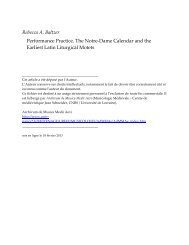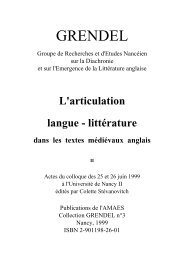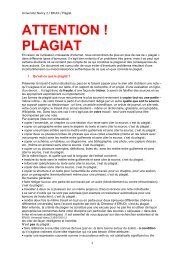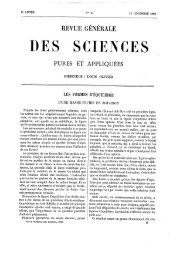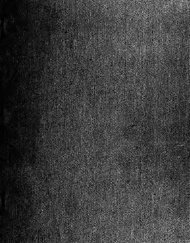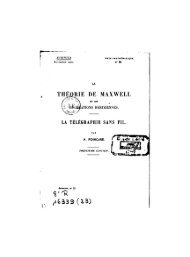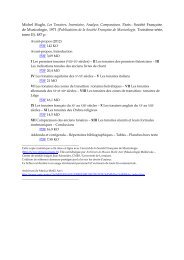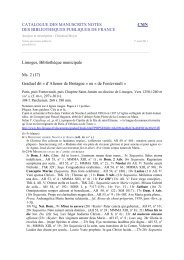3Harding-Mathieu - Université Nancy 2
3Harding-Mathieu - Université Nancy 2
3Harding-Mathieu - Université Nancy 2
Create successful ePaper yourself
Turn your PDF publications into a flip-book with our unique Google optimized e-Paper software.
Translations of Beowulf<br />
25_(12U<br />
the phrase syþðan he hire folmum [æthr]an (line 722b), as "at the<br />
touch of his talons". He transforms Grendel's human hand ( folm) into<br />
monstrous claws, giving his translation of rinc as "creature" the<br />
connotation that the word has in modern horror films.<br />
Turning now to verbal echoes, we take as our example the word<br />
reced, which occurs five times in the passage (lines 704, 714, 720,<br />
724, and 728). This repetition works to unify the text and to emphasise<br />
the hall as the center of the action and the focus of Grendel's<br />
obsession. Gummere employs three different and rather<br />
hetereogeneous nouns: twice "hall", once "palace" and twice "house".<br />
Donaldson translates reced once as "house", and four times as "hall".<br />
Greenfield also translates it four times as "hall", and once as "door"<br />
(in the alliterating example already mentioned). Wright uses "hall"<br />
three times, once "Heorot", and once "building". None of the<br />
translators respects the text's system of echoes throughout. To<br />
differing degrees, all the target texts sacrifice verbal echo for the sake<br />
of lexical variety. In terms of the music of the text, then, the<br />
translators choose to recreate the reader with varied sounds, rather<br />
than re-create the repetitive phonic structures of the Old English.<br />
Now we move to the architecture of the text to see whether the<br />
translators reproduce its structural features. The text is framed by two<br />
half-lines, line 702b and 736a, which both contain a prepositional<br />
phrase with the noun niht, thus associating Grendel with the terrors of<br />
darkness. This repetition, seemingly easy to re-create, seems to be<br />
purposely avoided by Gummere, who translates niht first as "night"<br />
and second as "evening". The other translators re-create the structure,<br />
but only Greenfield preserves the original placement of the word niht<br />
at the end of the last sentence. 11 A second envelope pattern is formed<br />
by half-lines 706a, þæt hie ne moste, and 735a, þæt he ma moste. Thus<br />
Grendel's arrival at Heorot is bracketed by the reassurance that his<br />
actions will be frustrated by God's providential design. None of the<br />
11 . Indeed, Greenfield expresses the horror of night even more strongly than the<br />
source text by turning sceadu-genga into "death's shadow".




